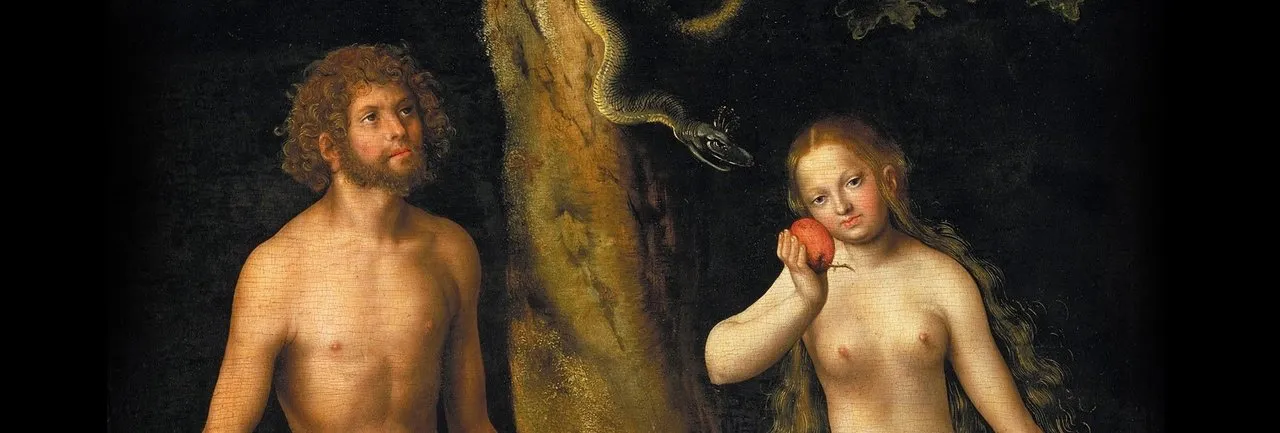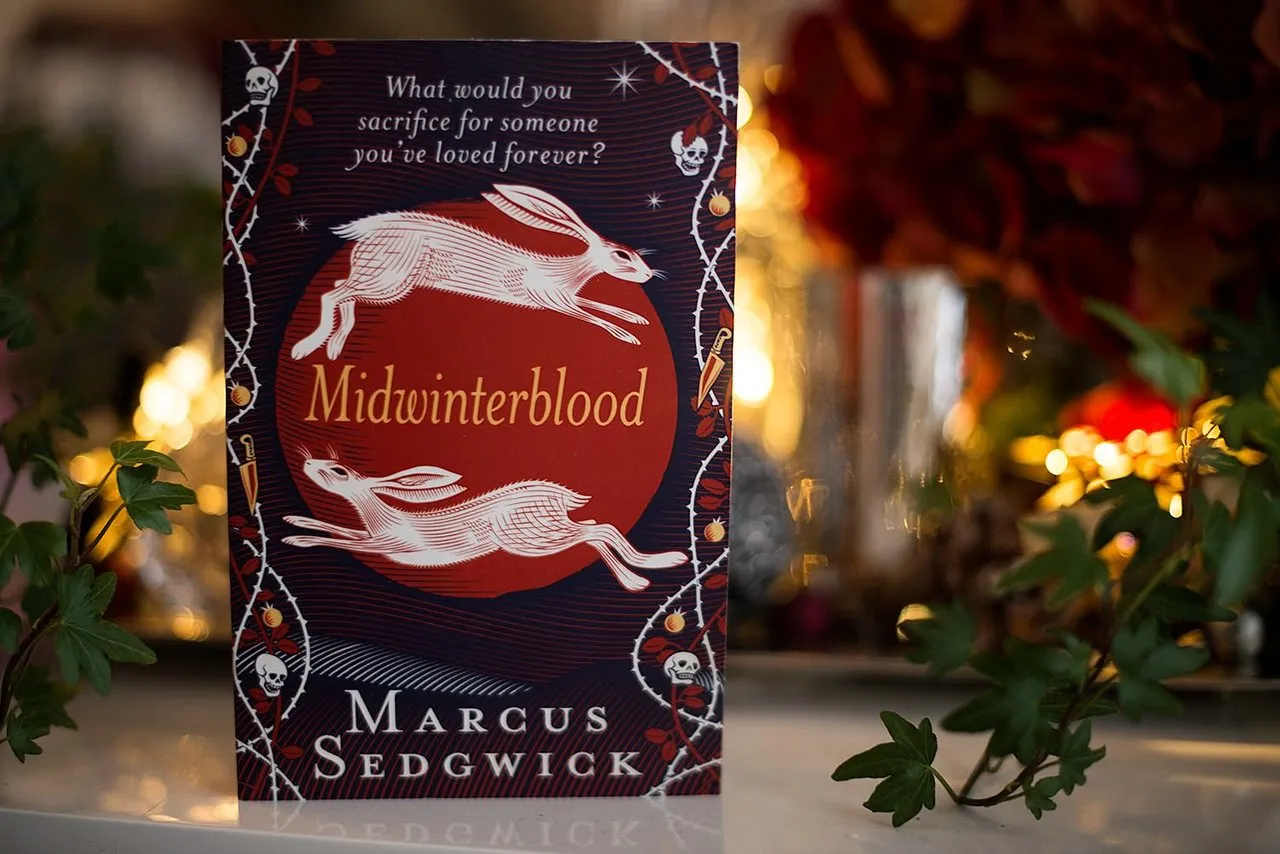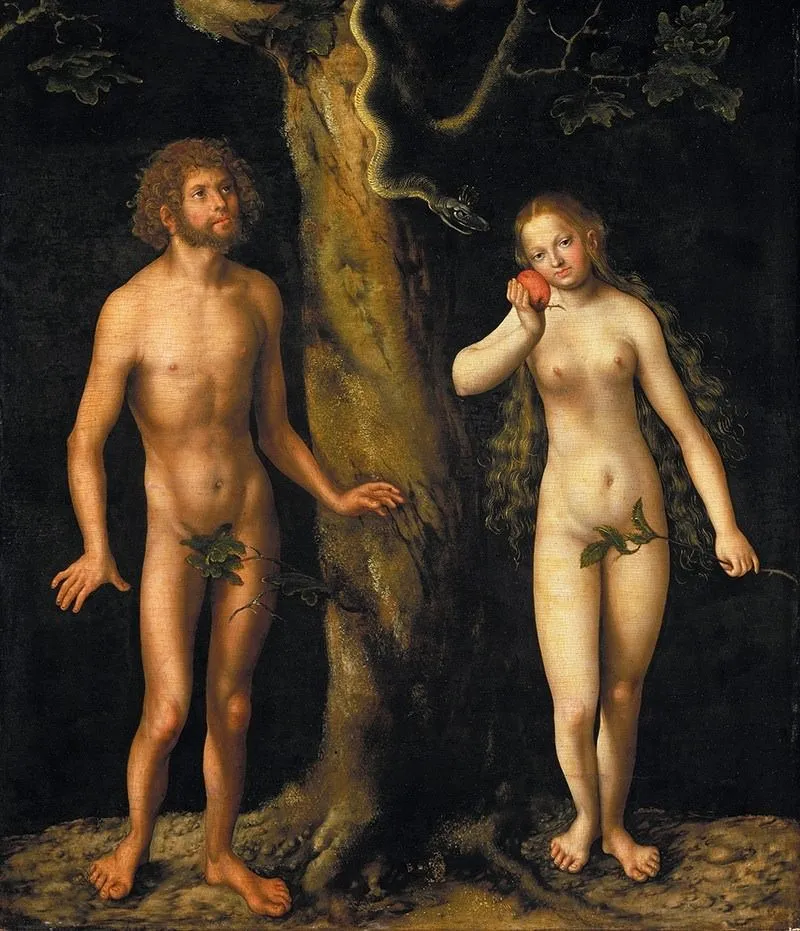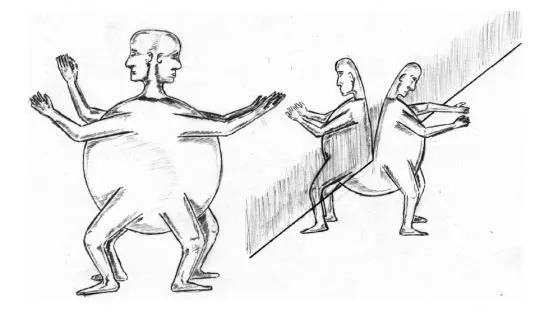
source
Before we go any further, let me just assure you that this is not a religious article in the slightest, although it touches heavily upon the afterlife and quite a few religious concepts. Also, I would like to mention that the title for this post is largely a credit to the book Adam and Eve, by Romanian writer Liviu Rebreanu.
The book Adam and Eve, published in 1925 in Romania, deals with the concept of metempsychosis, or reincarnation if you will. The book tells the story of two characters – Toma and Ileana – who are soulmates, destined to find each other throughout seven different lives. On his deathbed in his seventh life, Toma reaches the moment of awakening and is allowed to revisit all his other existences, to find his beloved again and again. His soul journeys through ancient Egypt, Babylon, Rome, medieval Germany and revolutionary France, finding his soul-mate and in each one, losing her again.
It plays heavily on the concept of transmigration – the moving of a soul from one body to another. This idea has its origins in the Orphic religion, Orpheus having taught that the body and soul are bound together in a phenomenal inequality, the soul being divine and longing to break free, while being imprisoned inside the human body. The followers of this religion believed that existence was basically an alternation between an unrestrained existence as a spirit and the inevitable rebirth in a mortal body.

source
Orpheus also believed that these eternal prisoners could only dream of salvation, of breaking this chain of terrible events (because reincarnation here is seen as a suffering, a punishment to the soul) by leading a life of piety and turning to the gods, particularly to Dionysus, an idea that would later carry over into Christianity.
Naturally, the concept of metempsychosis has been one that fascinates artists for centuries. Writers such as John Donne, Edgar Allan Poe, Herman Melville and James Joyce all touched upon it, in their writings. As have Marcel Proust and Guy de Maupassant.
More recently, the subject has found its way not only in the above mentioned Adam and Eve, but also in an astonishingly similar tale, by British author Marcus Sedgwick – Midwinterblood.
'I will live seven times, and I will look for you and love you in each life.'
The back cover boasts, while the front asks the captivating question:
What would you sacrifice for someone you've loved forever?
Like Adam and Eve, the book begins in the last life, where on a mysterious island, the he in the story is about to be murdered on a stone table, echoing his first like, where as a king, centuries before, he was sacrificed to restore the island's crops and thus save his people from starvation. Again, we go through all of his their previous lives together, with a small difference. Whereas in Adam and Eve, the souls are lovers in each one, or at least fall madly in love in each one, in Midwinterblood, they're just together. In one life as lovers, but in another as brothers, or as mother and child in yet another.
Perhaps my favorite one is their fifth existence, The Airman, where during World War II, Erik (the he) lives with his wife and child on the island and they refuse to take part in the war, they try to keep away from the fighting as much as they can, but at one point, the fighting comes to them. A soldier falls with his military plane onto their island, wounded and dying, so they begin to care for him, to nurse him back to health, despite Erik's misgivings and fear that it will draw the enemies' attention, and might get them killed. The wounded airman and Erik have many spats throughout the story until at one point, Erik grabs the airman's wallet in order to burn it (so as to destroy any trace of his fighter life, in case enemy soldiers come looking). But then he opens the wallet and looks inside, seeing a picture of the airman's own wife and little girl. Little girl whom he recognizes as his beloved from another life, his other half. The story ends with Erik helping the airman leave on a boat, to get back to his family. As the enemy soldiers arrive, they see the boat far out in the water and execute Erik for helping the airman.

source
The two books bear some interesting similarities, such as the number seven, which is generally considered to be a special number, in various religions (seven days of Creation, anyone?). “Avenged sevenfold” which is not only a great heavy metal band, but a quote from the Book of Genesis -
"if Cain shall be avenged sevenfold"
The seven deadly sins, as well as many other representations of the number, are present in Christian beliefs.
The Hindu belief that there are seven worlds in the Universe, seven seas (sound familiar?) in the world and seven Rishis (spiritual gurus); the seven chakras; the Islamic seven hells and heavens; the number of mourning days in Judaism is also seven. All of these representations of this number show that it holds a very special place in most religions today and has a significance probably dating somewhere way back, before all of these religions even existed.
And so, although there is no religious writing (at least that I know of) that dictates the number of reincarnations must be seven, I imagine this is why these authors have stuck to this one number.
Then, there's the concept of singularity that is present in each life of each of the characters (in both novels) – the idea that
One man out of millions of men desires one woman out of millions of women. Adam and Eve!
Both of them, while tackling a very heavy concept – perhaps the heaviest of all, love – are also ultimately, novels of hope, speaking of a love that transcends time and space.

source
I think it's worth mentioning that the very idea of reincarnating soul mates would have probably passed us by, or at least wouldn't have been so prominent in our culture without the ancient Greek philosopher Plato, who adopted the idea of metempsychosis in some of his famous works, such as The Republic, in which he tells the story of a man who comes back from the dead and tells of the wonders on the other side, where he was humans being reincarnated as other animals.
Then, there's of course the Origins of Love, Plato's most compelling myth, perhaps.

source
It states that once long ago, there were three types of people – children of the sun, two males, back-to-back; children of the earth, two females back-to-back; and children of the moon, a man and a woman back-to-back. And he tells of how they two heads, four arms, four legs etc. They looked out for each other and were perfect pairs. Until one day, Zeus decided they were becoming too powerful, that they were becoming a threat to the heavens and so, he cast down thunders to split them up in two, resulting into the human shape we know today.
And so, those separated halves look for each other continuously, hoping to one day form a whole again. Two halves of the same soul = soul mates.
And so, we have Plato to thank for at least contributing to this myth that we still love and tell today.
Authored by @honeydue
Click on the coin to join our Discord Chat

Witness proposal is here:
Go To Steem Witness Page
In the bottom of the page type: adsactly-witness and press vote.

Use small letters and no "@" sign. Or, click here to vote directly!
Thank you!